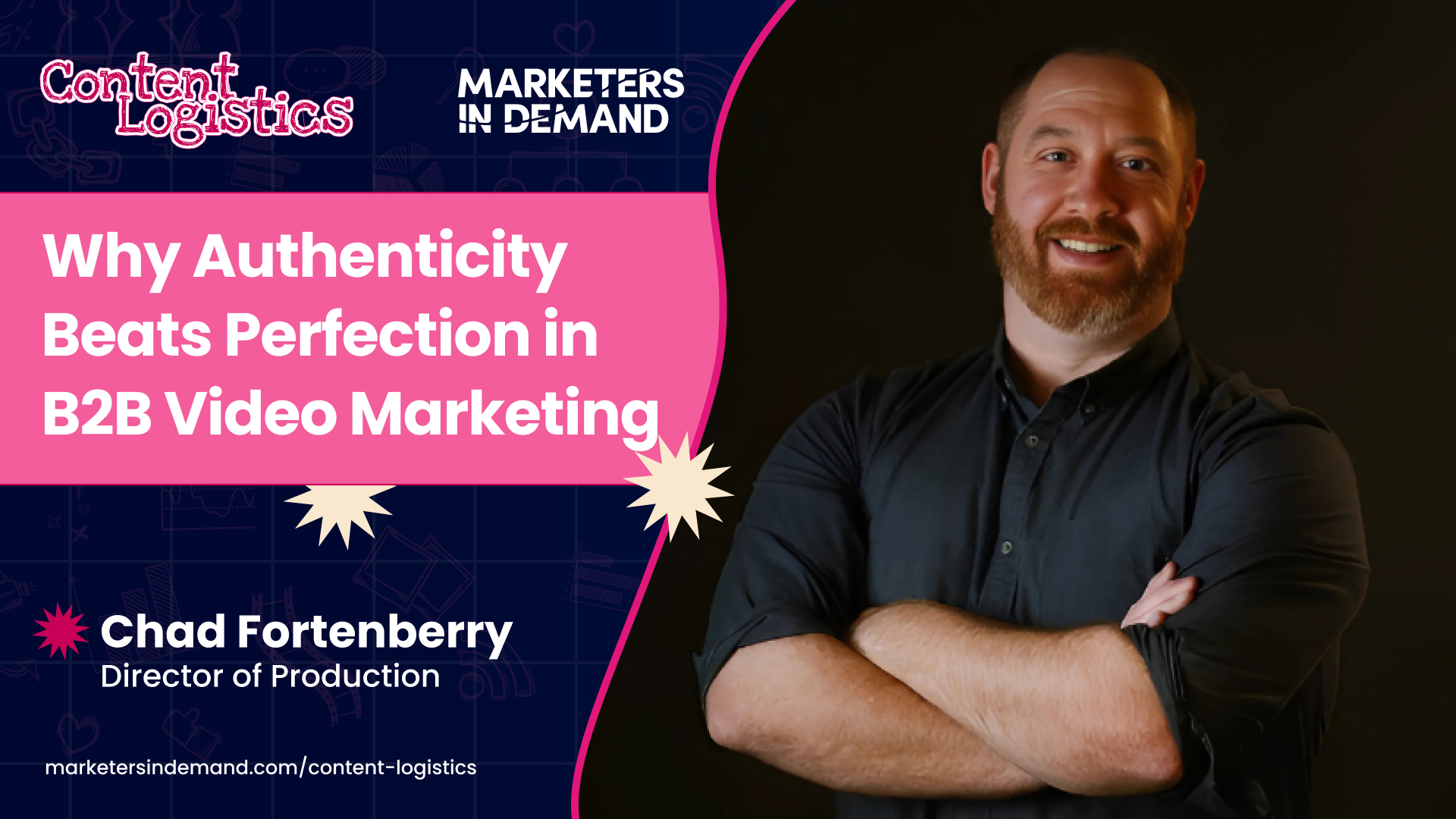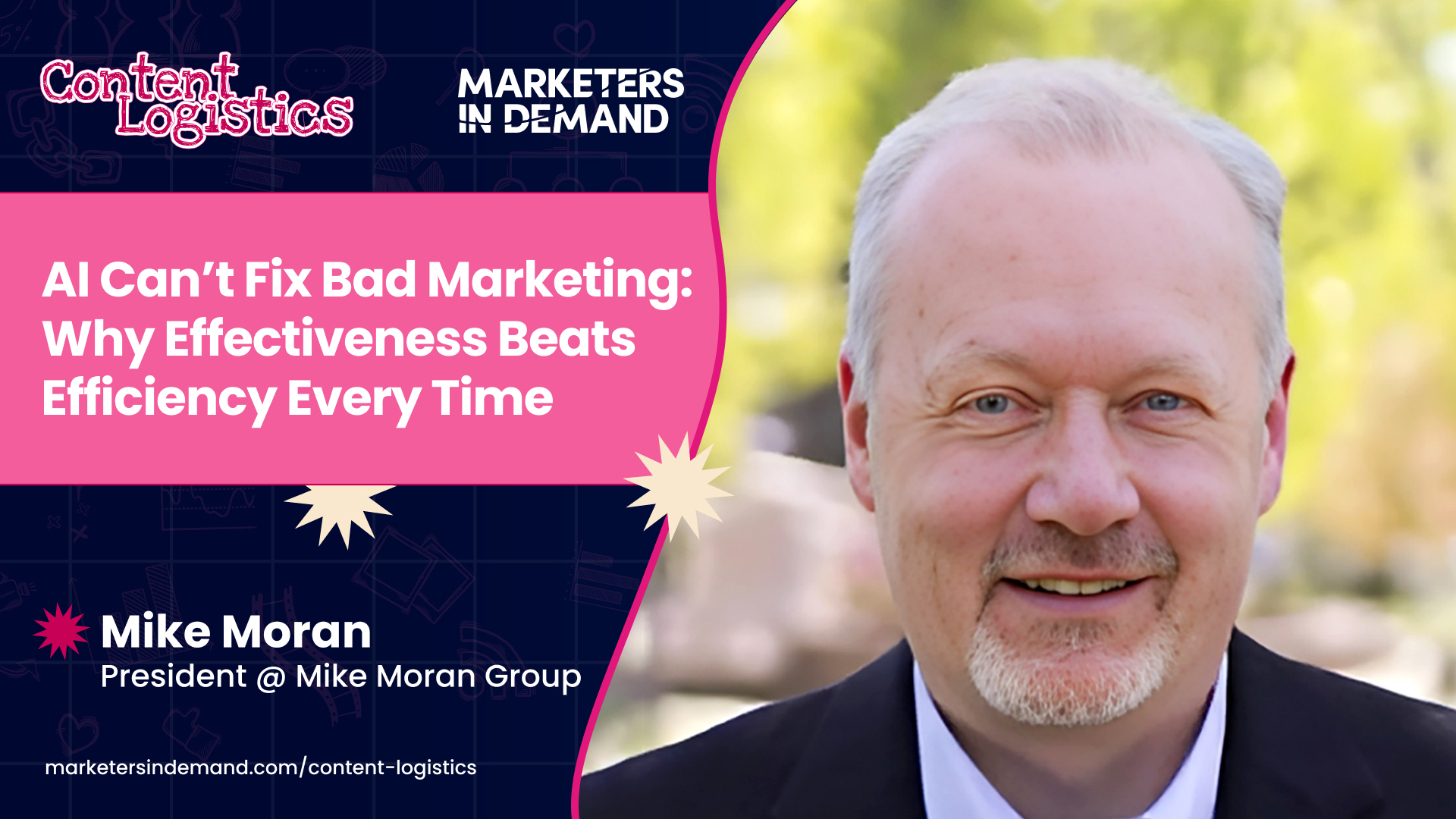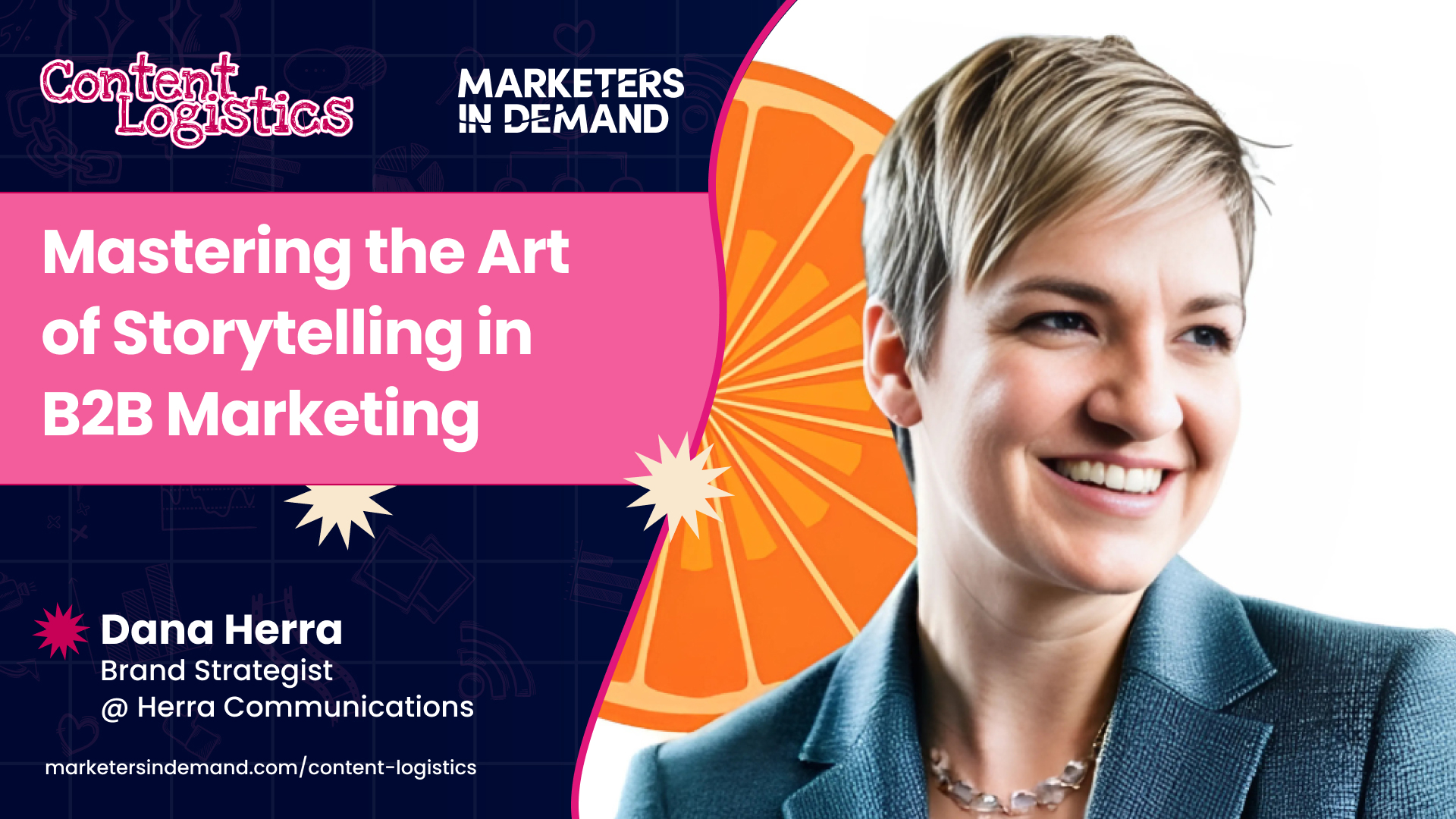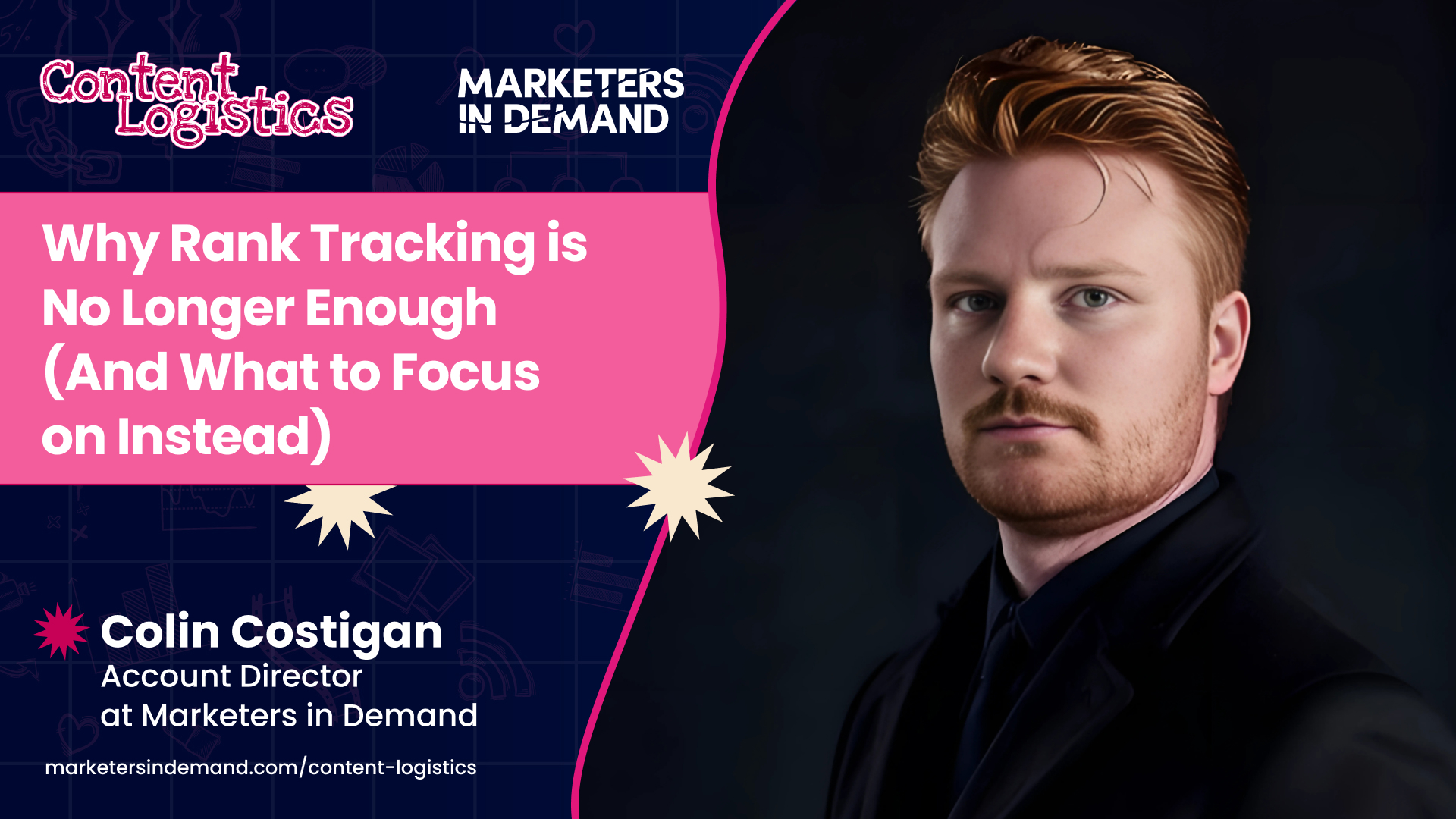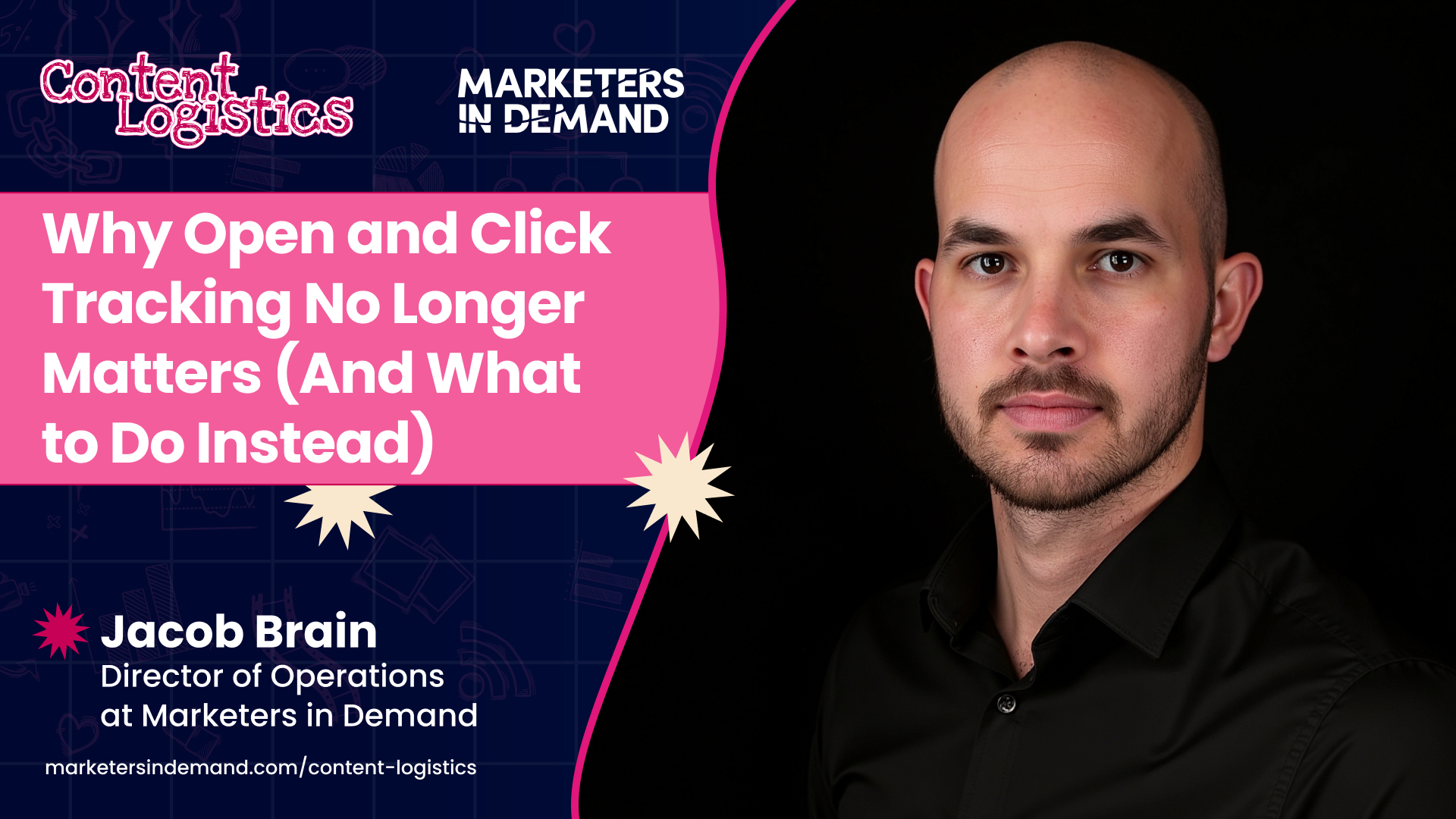In this episode of Content Logistics, host Baylee Gunnell sits down with Lyndsay Cambridge, Director of Jammy Digital, to discuss actionable strategies for creating impactful video content in the B2B space. Lyndsay breaks down her five essential elements for success: consistency, a strong hook, a director, unique storytelling, and sharp editing. She explains how these pillars, when executed well, can transform video content into a powerful tool for driving sales and engagement.
Lyndsay shares her insights on the difference between “fame” and “fortune” strategies in content marketing, emphasizing the importance of aligning your approach with business goals. Fame focuses on building broad reach, while fortune hones in on converting niche audiences into loyal customers. Using real-world examples, Lyndsay highlights how even fewer views can lead to higher sales if the content resonates with the right audience.
The conversation also dives into AI’s role in content creation. Lyndsay explains how AI tools can streamline workflows without compromising originality, ensuring content remains authentic and valuable. Whether you’re an established marketer or just starting out, this episode offers practical tips to elevate your video strategy and make meaningful connections with your audience.
Featured Guest

Name: Lyndsay Cambridge
What she does: Director
Company: Jammy Digital
Noteworthy: Expert in video content strategy and content marketing success.
Featured Guest
Key Insights
Fame vs. Fortune: Choosing the Right Content Strategy
Lyndsay Cambridge outlines the critical distinction between fame-driven and fortune-driven content strategies. Fame focuses on reaching a broad audience with controversial or viral content, while fortune targets a niche audience to drive conversions and sales. Lyndsay shares examples of how businesses can align their goals with the right strategy, warning against the common mistake of chasing vanity metrics like views and likes without seeing results. She emphasizes that understanding this difference is essential for businesses looking to maximize the ROI of their content marketing efforts.
The Five Pillars of Successful Video Content
Lyndsay Cambridge introduces her five key elements for effective video content: consistency, a strong hook, a director, unique storytelling, and quality editing. She explains how each pillar contributes to creating content that resonates with audiences and achieves business goals. For example, a strong hook grabs attention immediately, while consistency builds audience trust over time. Lyndsay’s approach blends strategy with creativity, offering a practical framework for businesses to elevate their video marketing efforts.
Using AI to Enhance, Not Replace, Content Creation
Lyndsay Cambridge discusses the role of AI in streamlining video content strategies. While Jammy Digital avoids using AI for content creation itself, Lyndsay highlights how AI tools can assist with planning, repurposing, and editing. She explains that leveraging AI to handle repetitive tasks allows her team to focus on creating original, human-centered content that cannot be replicated by machines. This approach ensures efficiency without sacrificing authenticity, offering a balanced perspective on integrating AI into modern marketing workflows.
Episode Highlights
Building Trust Through Consistency in Content
Lyndsay Cambridge emphasizes the importance of consistency in building trust and engagement with audiences. She explains how regular content posting not only aligns with algorithms but also establishes audience expectations, fostering loyalty and connection over time. Lyndsay advises businesses to create realistic schedules for content production to maintain consistency, which is often underestimated as a powerful growth tool.
“When you’re creating content, the algorithm gets used to you posting. It starts to push it out more, but more importantly, your audience gets to notice it. They start to tune in, they start to look forward to it.”
The CEO as the Face of the Brand
Lyndsay discusses why CEOs or founders are often the best faces for their company’s content. She highlights the unique insights, stories, and authority CEOs bring, making their messaging more authentic and relatable. While some CEOs are hesitant about being on camera, Lyndsay stresses that with practice and support, even the most camera-shy leaders can effectively represent their brand.
“The CEO has the most insight, amazing stories, and experiences. It’s their baby. They have unique knowledge no one else can bring. The more we can get from the CEO, the better.”
The Role of a Professional Director in Video Production
Lyndsay highlights the value of having a director or a trusted colleague present during video production. Directors can catch mistakes, prompt deeper insights, and ensure content is clear and compelling. Their feedback helps refine messaging and keeps the presenter confident, ensuring the final video resonates with the audience.
“You don’t realize how much a director or even a friend can help. They can catch things like unclear sentences, low energy, or awkward metaphors, which make the difference between good and great video content.”
Editing as a Reflection of Brand Identity
Lyndsay explains how editing shapes a brand’s video identity. She underscores the importance of consistent styles, such as colors, fonts, and graphics, to reinforce brand recognition. While tools can help small teams, Lyndsay advises prioritizing professional editing to save time and achieve higher quality.
“People get to know your style. We use the same fonts, colors, and graphics for each client, creating a unique yet consistent identity that resonates with their audience.”




